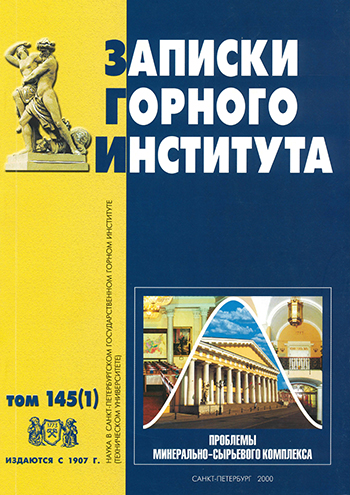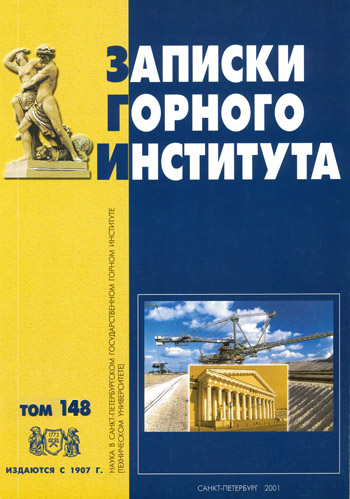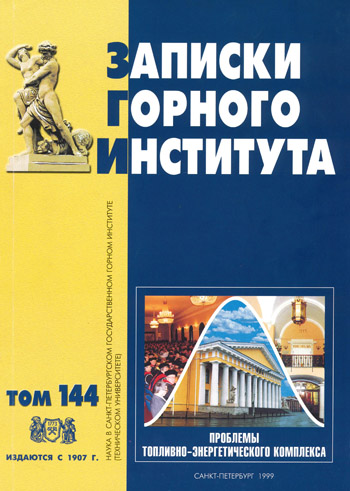-
Date submitted1999-06-20
-
Date accepted1999-07-21
-
Date published2000-05-19
On the necessity of a new government policy in the field of minerals and metals
- Authors:
- V. S. Litvinenko
Russia is one of the world leaders in the exploration of natural resources. It is a leading exporter of natural resources in the world and the mining industry plays an important role in the economic and social spheres of Russian society. The continuing recession in production of natural resources and the deterioration of mineral resource supplies adversely affects Russian enterprises. Most of the mining equipment in the country is falling into disrepair and no measures are being taken to replenish these supplies all of which contributes to a less favorable investment climate. This can lead to a situation where a world leader in natural resource production will practically lose control over effective usage of these resources. The objective of this paper is to stress the necessity of immediately changing the State's approach to management of natural resources and of adopting a state governmental policy on management of natural resources. A strategy of sustainable development in the Russian economy requires an immediate change in the existing attitudes to problems related to raw materials along both economic and social lines, both as relates to our goals and the required effort to reach them.
-
Date submitted1999-06-27
-
Date accepted1999-07-25
-
Date published2000-05-19
Resource provision of the FEC in Russia
- Authors:
- V. V. Shelepov
The author analyzes the structure and balance of Russia's power industry. The fact that usage of natural gas dominates in the region of the world's largest coal resources is noted. Concrete recommendations are given for the development of the resource supply of the Russian raw materials industry with the expansion, in particular, of prospecting and exploitation of mineral deposits of uranic ore.
-
Date submitted1999-06-14
-
Date accepted1999-07-04
-
Date published2000-05-19
On the concept of tax reform in the mineral raw materials complex in Russia
- Authors:
- E. A. Soloviova
- V. A. Zubkov
The authors analyze the present tax system in the mining industry. They show the percentage of the Russian Federation budget which is provided by the mining industry's tax payments. The article explores the shortcomings of the tax system in the raw minerals industry of the country. The article notes that the Russian Federation tax system generally has a fiscal character and requires reformation into a taxation system, which would provide economic stimulation. A tax reform plan, which introduces the concept of 'rent[1] into the Russian mining industry's tax burden, has been proposed. Special attention is paid to the stimulating role of taxation on production in the mining industry.
-
Date submitted1999-06-19
-
Date accepted1999-07-05
-
Date published2000-05-19
On the problem of state regulation of the mineral raw materials complex
- Authors:
- L. A. Scherbakov
The article deals with the theoretical, methodological and practical issues of governmental regulation during the economy's transition to a market economy. Objects, subjects, purposes and mediums of state control are shown. Scope, methods, forms and procedures of governmental regulation in the mining industry are shown as well.
-
Date submitted1999-06-21
-
Date accepted1999-07-14
-
Date published2000-05-19
Mineral resources policy and national security of Russia
- Authors:
- E. A. Kozlovsky
A detailed analysis of the present-day condition of the mineral resource base of the country has been presented by kinds of strategically important raw materials, with the account of market conjuncture and situation in the mining industry and geological prospecting. A common tendency has been emphasized in the development of the mineral resource complex - the reserves of all kinds of mineral resources are depleting, the retirement of reserves is not compensated by their growth due to a sharp reduction of exploration works. An important role of the mineral resource potential has been marked as a foundation for the economic development of Russia, its national security, geopolitical situation and role in the world community. Priorities are considered for a strategy of using the country's mineral resource base.
-
Date submitted1999-06-19
-
Date accepted1999-07-21
-
Date published2000-05-19
Improving the management of the FEC enterprise by coordinating objectives
- Authors:
- V. Z. Kazachenkov
Analysis of the forecast of the internal demand for power resources in the region must be based on the assessment of energy consumption per person and internal energy consumption per area and per sector. The target rates of the fuel and power industries shall be determined quantitatively. Decisions related to the forming and setting of targets shall be based on the forecast data and results of the model calculations. When management is founded upon coordination and target setting for the enterprise manager, strategic goals setting such as the improvement of personnel organization and encouragement shall achieve a substantive qualitative dimension.
-
Date submitted1999-06-01
-
Date accepted1999-07-03
-
Date published2000-05-19
Economic strategy of Gazprom enterprises during the formation of an optimal ratio energy prices
- Authors:
- N. I. Oleschuk
The 'Gazprom' family of companies supplies most of the natural gas in Russia and occupies a main role in the Russian energy industry. The current economic situation has forced 'Gazprom' to develop its own strategic management in a way that both differs from the strategic management used in command economies and free-market economies. In the current conditions only the intervention of the government in the economic sphere of activity fosters competitive order. The companies are to take an active part in realizing governmental programs and participating in tenders for government orders. At the same time, however, active promotion of its goods and services on the market is necessary. When forming the new energy strategy, it is planned to establish an optimal ratio between coal, natural gas and fuel oil. In such conditions, companies of the same industry will take part in a continually growing rivalry with companies of other energy industries, as each industry will produce competitive substitutes.
-
Date submitted1999-06-06
-
Date accepted1999-07-11
-
Date published2000-05-19
Strategical management at the level of a large interregional company
- Authors:
- M. A. Bezrukova
Strategies developed by the 'Mezhregiongas Company' with respect to gas supply to the end-user must be sufficiently flexible and able to meet demand in correspondence with the requirements of the market in any and every region. Under current conditions, the company must capitalize on all authorized market mechanisms seeking payment for gas deliveries and define its obligations to regional budgets by the conclusion of agreements between the company's branches and subjects of the Russian Federation. Therefore, in order to strengthen its influence and position on the heating market, the company must develop the maximum-feasible, closed-loop production system for the delivery of gas to its clients (including possession of low-pressure networks). In addition, it is necessary to support a continuous gas supply to regions where the company has strategic interests.
-
Date submitted1999-06-27
-
Date accepted1999-07-15
-
Date published2000-05-19
Efficiency of enhanced oil recovery at Russian oil fields
- Authors:
- V. L. Bogdanov
In the present economic situation, it is extremely important for Russia to make oil production as effective as possible, especially in complicated conditions by introducing state-of-the-art technologies thereby increasing oil yield. Despite various examples of the successful application of new technologies in horizontal drilling, hydraulic fracturing, water flooding and the hydrodynamic, physio-chemical and thermal methods, for example, by 'Surgutneftegaz', the oil yield in Russia is generally rather low. This is because we do not have a systematic approach to the problems of oil production and introduce advanced technologies too slowly. It is imperative that we, without delay, put into operation computer-aided models of field exploration using domestic potential and specialists.
-
Date submitted1999-06-29
-
Date accepted1999-07-13
-
Date published2000-05-19
POLYUS gold mining company as part of the gold mining industry in Russia
- Authors:
- Kh. M. Sovmen
The article gives the latest statistical information on the production and consumption of gold and on the gold currency reserves of the world's leading countries. The role of gold in the international economy and the expediency of using the gold standard are discussed. The article discusses the progressive and advanced experience of gold extraction company 'Polus' concerning the working of gold deposits in complicated conditions while working under the world's lowest production costs. The article also describes methods to stimulate the development of Russia's gold industry.
-
Date submitted1999-06-01
-
Date accepted1999-07-18
-
Date published2000-05-19
Use of energy resources in regions with a forest fund (the example of the Leningrad Region)
- Authors:
- A. A. Benin
The rational use of large quantities of low-quality timber and timber waste, which are being used as fuel for power plants and boilers instead of fuel oil and coal is a considerable factor in saving on imported, nonrenewable natural resources thereby decreasing the cost of heating as well as improving the state of the environment in the region.
-
Date submitted1999-06-09
-
Date accepted1999-07-21
-
Date published2000-05-19
Analysis of technical aspects of deepwater pipeline projects from a risk perspective
- Authors:
- Yu. R. Vyakhirev
The article discusses the possible technological risks involved in the construction, operation and repair of the shallow depth portion of the proposed gas pipeline in the 'Blue Stream Project This is a proposed project to build a pipeline, which is to extend from Russia to Turkey along the bottom of the Black Sea.
-
Date submitted1999-06-10
-
Date accepted1999-07-22
-
Date published2000-05-19
Medical aspects of the macroeconomics of the gas industry in the Far North
- Authors:
- S. V. Okhotnikov
- S. D. Burlakov
The article focuses on the peculiarities and specifics of social welfare provisions for those employed in the development and exploitation of oil and gas deposits in the Far North.


